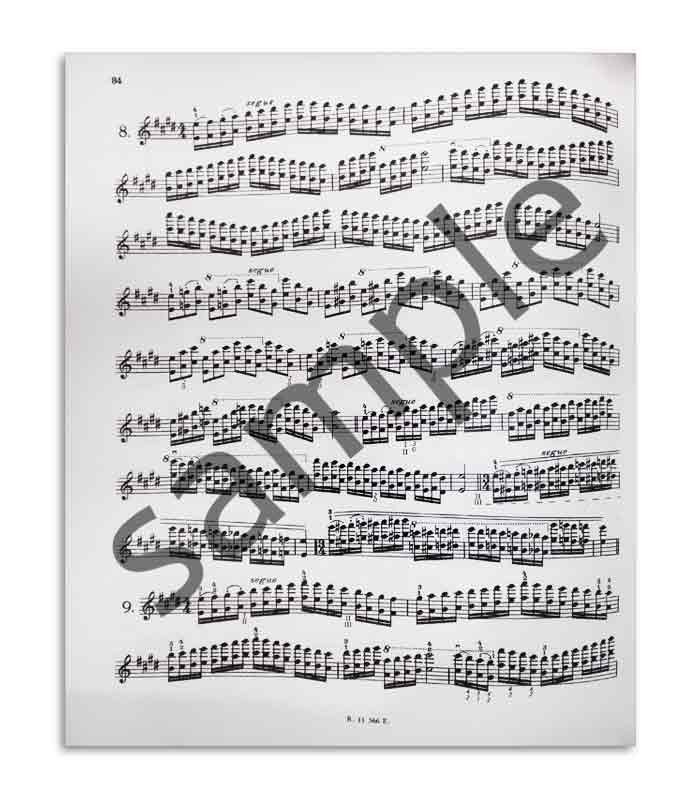

In the modern edition, Max Rostal suggests in his preface that the key may be changed twice a week. This way, the spacing is learned for every position and intervals remain the same for almost every major and every minor key.įlesch instructs that scales should be practised slowly for intonation and rapidly for facility, and that the key must be changed every day. In the new edition there is some attempt to cover four-octave scales but it is not very comprehensive and serves to further overwhelm the student with material. As you progress through the book, different rhythms, bow strokes and bowings are suggested for the study of each key.Įach scale from B flat major up uses the same fingering, always beginning on the second finger.

Section 6: Three-octave scale and arpeggios in thirds, with broken thirds and chromatics.Section 5: Three-octave scale, arpeggios, broken thirds and chromatic scale.

Sections 1-4: One-octave scales which are essentially shifting studies.The entire study for that key is contained in one place in the book in sections numbered 1 through 12. In order to see the difference in the two systems, let’s have a look at the way they are laid out.įlesch’s Skalensystem deals with one key at a time. Between the fourth and fifth minute, you can here a G major three-octave scale, from the Galamian scale system. Here is a video of a lesson given by Galamian, cigarette in hand, to a young Joshua Bell. He also felt the interdependence and relationship of the many technical elements was neglected. He disagreed with the idea that the violin must be taught from a physical angle, stating that technical mastery depends on the control of mind over muscle, rather than agility of fingers. Galamian saw problems in the way violin students were taught. One or the other will suffer.” He explained his enthusiasm for teaching, “Ever since I was a child I have been interested in the how-to-do-it aspect.”

Galamian was a consummate teacher, and once remarked, “One must make a choice – either a solo career or a teaching career. This clip gives some insight into Galamian’s relationship with his students. He also held prestigious teaching posts at the Curtis Institute and the Julliard School of Music. He had moved to New York as the Russian Revolution gathered pace, and once there he founded the Meadowmount Summer Violin School. Galamian used to chain-smoke his way through lessons, perhaps to diminish the pain and keep it from interfering with his teaching. It was speculated that this was due to chronic kidney stones which left him in great pain after every performance. Ivan Galamian (1903-1981) studied in Moscow. He maintained that all violinists should be schooled sequentially and defined each technical step clearly on the principle that tone quality, intonation, technical proficiency, listening and hearing skills are all things that can be taught. His students include Henryk Szering, Ida Haendel, Ginette Neveu and Max Rostal.įlesch believed that violin teaching before Sevçik had been flawed that Sevçik had proven that advanced technique could be a result of training and not genius. He began playing at the age of five, and was accepted into the Vienna Conservatoire aged just 13. Carl Flesch (1873-1944) was born in Hungary. The systems are different in profound ways and each has valid applications for the modern violinist.īoth Galamian and Flesch were master teachers, each from a long line of violin pedagogues. The scale systems by Carl Flesch and Ivan Galamian are by no means the only in existence, but they have been the most widely used by violin students and teachers for many years.


 0 kommentar(er)
0 kommentar(er)
